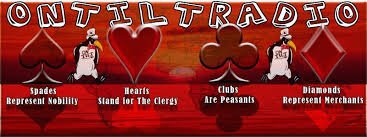Introduction to Badugi
Badugi is an intriguing lowball poker game that significantly departs from traditional poker formats. Originating from Asian countries, particularly Korea, Badugi has gained notable traction over the years among poker enthusiasts. Unlike conventional poker games that often focus on higher hands, Badugi employs a unique set of rules where players strive to create the lowest unique four-card hand possible. The game is typically played with a standard 52-card deck, and the objective is not only to have low cards but also to ensure that all cards in the hand are of different suits, making it distinctively challenging.
The development of Badugi can be traced back to the late 20th century, as it gained popularity alongside other lowball games. It shares some similarities with games like Razz and Triple Draw Lowball, yet stands out due to its requirement for unique cards and the subsequent card-drawing mechanics. Players are dealt four cards and can choose to exchange one or more cards in pursuit of achieving their optimal hand. This element of drawing adds an exciting dynamic to the game, as players must constantly evaluate their hands and the potential of the table.
Basic Rules and Gameplay
Badugi is an intriguing variant of lowball poker that requires players to adapt their strategies in accordance with its unique rules and objectives. It is generally played with a standard 52-card deck and can accommodate two to eight players, making it a versatile option for gatherings. Understanding the fundamental mechanics of this game is crucial for effective participation and enjoyment.
The primary goal in Badugi is to form the best four-card hand consisting of cards of different suits. Unlike traditional poker where higher hands prevail, in Badugi, the lowest possible hand wins. A valid hand must contain one card from each suit, and the hand ranks are determined based on the highest card in the hand. Notably, hands such as 4-3-2-A of different suits are ranked higher than hands that repeat suits or are formed of high-ranking cards.
The gameplay involves multiple betting rounds. Players receive four cards facedown, followed by an initial betting round. After the betting is complete, players have the opportunity to discard any number of cards to improve their hands, drawing replacements from the deck. This process of drawing and restructuring hands can occur up to three times, with betting rounds interspersed after each draw. The final round of betting precedes the showdown, where players reveal their hands, and the one with the lowest qualifying four-card hand wins the pot.
It is essential to note that Badugi differs significantly from 2-7 triple draw lowball. While both variants focus on creating lower hands, 2-7 allows straights and flushes to be considered high, unlike in Badugi, which mandates unique suits. These differences add layers of complexity and strategic consideration to the gameplay, enhancing its appeal among poker enthusiasts.
Understanding Hand Rankings in Badugi
In Badugi, hand rankings diverge significantly from traditional poker games, notably through its lowball format. The objective of this game is to create the lowest unpaired hand consisting of four cards, each of a different suit. Unlike conventional poker, where players aim for high hands like straights or flushes, Badugi prioritizes unique suits and low values. One key distinction is that a ‘Badugi’ hand is composed of four cards that meet these criteria: they must all be of different ranks and different suits. The best possible hand is a 4-3-2-A, as it encompasses the lowest ranks available.
When evaluating hand strengths, the value of the cards is of paramount importance. In this context, Aces are low, making them favorable when they appear in a player’s hand. If two players have a Badugi hand, the one with the lowest values wins; for example, a hand of 4-3-2-A defeats a hand of 5-4-3-2. If a player possesses a hand that does not meet the criteria for a Badugi, it is then assessed as a ‘three-card’ or ‘two-card’ hand taking into account the highest value card of the same suit. This necessitates an understanding of not only individual card rank but also how they interact within the format specified by the game’s rules.
Another essential aspect of hand rankings in Badugi is how ties are resolved. If two players each have a Badugi and their respective low cards of different suits match, then comparisons are made starting from the highest card downwards until a distinct ranking is established. Moreover, it’s worth noting that a hand consisting of fewer than four cards cannot qualify as a Badugi, thus emphasizing the necessity for players to aim for the best four-card combination encompassing unique suits. Understanding these rankings is vital for any player aspiring to excel in Badugi.
Strategies for Playing Badugi
Playing Badugi effectively requires a unique set of strategies that can differ significantly from those used in traditional poker games. Central to success in Badugi is hand selection. Players should aim to construct the lowest four-card hand consisting of cards of different suits. Targeting hands that have potential for strong Badugi formations, such as 2-3-4-5 or A-2-3-4, is essential, while avoiding hands with paired cards, as they contribute to a weaker overall hand and can lead to potential losses.
Betting strategies are equally important in the game of Badugi. Players must carefully consider how to approach betting during different rounds. A common approach is to increase aggression when holding a strong hand or favorable draws. This can force opponents to fold weaker hands, minimizing competition. Conversely, if the cards do not improve, it may be advisable to play conservatively, avoiding large pots when the risk outweighs the reward. Understanding when to call, raise, or fold is crucial and should be evaluated based on the table dynamics and opponents’ tendencies.
Another key aspect of playing Badugi involves effectively reading opponents. Observing betting patterns, timing, and reactions can provide vital clues about opponents’ hand strengths. Unlike traditional poker, where high hands dominate, Badugi reads more on low hands, making it essential to notice how players react to different community or drawing situations. Establishing a tight-aggressive playing style can also be beneficial, as it not only strengthens your position but also signals to your opponents that you are a formidable player. Ultimately, mastering strategies in Badugi necessitates a blend of strategic hand selection, adept betting, and keen observation of opponents, ensuring a comprehensive approach to improving one’s gameplay.
Common Mistakes to Avoid
Badugi is a unique lowball poker variant that requires a distinct strategic approach compared to traditional poker games. As players familiarize themselves with the game’s mechanics, several common mistakes may arise, potentially hindering their performance. Understanding these pitfalls is essential for both novice and experienced players.
One frequent error among Badugi players is overvaluing hands. In this game, the objective is to form the lowest possible four-card hand with each card being of a different suit. Players often mistakenly assume that two or three low cards constitute a strong hand. However, it is crucial to recognize that the distinctive nature of Badugi means that even a hand comprised solely of low cards may not be competitive. Instead of aiming for the lowest individual cards, players should focus on the overall hand structure and the potential of forming a legitimate Badugi. This includes evaluating the interplay between the cards and considering what opponents may hold.
Another common misconception is misreading the lowball aspect of the game. Players may find themselves caught in the traditional mindset of high poker hands. Unlike in standard poker games, where high-value hands dictate success, Badugi calls for a different evaluation method. Players should constantly assess the strength of their hands relative to others in play and avoid the tendency to bluff, which is less effective if opponents are also focused on forming Badugi hands. Understanding this nuance can greatly enhance one’s gameplay.
Lastly, poor card drawing strategies often impede progress in Badugi. Players must remember that selectively discarding cards can create opportunities for stronger hands while carefully considering what cards they need to improve. By avoiding these common mistakes, players can elevate their Badugi experience, leading to more strategic and enjoyable gameplay.
The Role of Position in Badugi
In Badugi, the concept of player position plays a crucial role in determining betting strategies and overall gameplay dynamics. The game is characterized by its unique structure, where players aim to create the best four-card hand with low-ranking cards, specifically avoiding pairs and focusing on achieving a unique hand. The position of each player at the table, whether early or late in the betting order, significantly influences their tactical decisions throughout the various betting rounds.
Players in early positions, relative to the dealer button, typically face a more challenging scenario as they must act without gaining insights into opponents’ intentions and hand strengths. This situation often necessitates a more cautious approach to betting, as players risk revealing their strategies and possibly facing aggressive raises from those in later positions. To mitigate these risks, early-position players might limit their involvement to stronger starting hands, thereby enhancing their overall prospects of completing a competitive Badugi hand.
Conversely, players in late positions enjoy the advantage of information. Acting after several opponents allows them to observe the trends in betting and to assess the strength of others’ hands. This strategic vantage point often enables them to adopt a more aggressive betting strategy, as they can exploit any weaknesses displayed by opponents. Furthermore, players in late positions can manipulate the pot size by choosing to either call, raise, or fold based on their understanding of the dynamics in play.
Ultimately, player position in Badugi directly impacts one’s ability to execute effective strategies while navigating through the betting rounds. Understanding the significance of position not only aids in refining one’s approach but also serves to elevate the overall enjoyment and competitiveness of the game for all participants. By keenly observing the behaviors of players throughout the rounds, individuals can enhance their performance and make more informed decisions, leading to greater success in this intriguing four-card lowball poker variant.
Badugi Variants to Explore
Badugi, a popular four-card lowball poker game, offers various exciting variants that players can enjoy. These variations not only introduce unique betting structures but also accommodate different numbers of players, significantly influencing strategy and gameplay. Understanding these options can enhance your overall experience in this card game.
One primary variant is known as “High Stakes Badugi,” which typically alters the betting structure to accommodate more significant wagers. In this format, players often adopt aggressive strategies, as the potential for higher earnings attracts a different style of play. By adjusting the stakes, players must be adept at reading their opponents and managing their bankroll, which introduces an additional layer of complexity to the game.
Another interesting variant is “No-Limit Badugi.” This version removes the cap on bet amounts, allowing players to wager their entire stack at any point during the game. The lack of limits significantly changes gameplay dynamics, encouraging bold moves and higher risks. Players must remain attentive to their chip count and adapt their strategies accordingly, as a single mistake can result in elimination.
For those interested in social gameplay, “Team Badugi” variant allows players to form partnerships. In this format, teams compete against each other, pooling their cards and resources to develop strategies collaboratively. This adds an interactive component to the game and requires teamwork and communication, which can be both challenging and rewarding.
Lastly, “Badugi with Jokers” introduces wild cards into the game, making it more unpredictable. This variant allows players to substitute a joker for any card to create a Badugi hand, leading to more diverse strategies and potential combinations. The unpredictability caused by the presence of wild cards requires players to remain flexible and adaptable while developing their strategies.
Online Badugi: Finding a Game
In recent years, online Badugi has gained traction as more poker enthusiasts seek to explore this unique four-card lowball game from the comfort of their homes. A diverse range of online platforms provides opportunities for players of all skill levels to engage in Badugi games. Notable poker sites like PokerStars, 888poker, and partypoker frequently host Badugi tables, catering to both casual players and those looking for more competitive environments. As online platforms evolve, they enhance the user experience with advanced features that seamlessly integrate gameplay and interaction.
When selecting an online Badugi site, one should consider several factors to ensure a satisfying experience. The reputation of the site is crucial; reading reviews and assessing user feedback can provide insights into the platform’s reliability and integrity. Additionally, it is essential to check the variety of games available. Some sites may offer a limited selection of Badugi, while others could provide multiple stakes and formats. Furthermore, promotions and bonuses can significantly enhance the play experience, making it necessary to choose a platform that offers valuable incentives for its users.
Etiquette in online Badugi is generally less rigid compared to live games, but mutual respect among players is still paramount. Players should maintain a courteous demeanor, avoid excessive chatting, and remember to abide by the specific rules outlined by the platform. Those new to the game or platform should take the time to familiarize themselves with the interface and rules of Badugi to enhance their overall enjoyment.
Lastly, as technology continues to advance, the online Badugi landscape is becoming increasingly sophisticated. Improvements in software and graphics create an immersive gaming environment, while secure payment options bolster player confidence. Altogether, these elements contribute to a thriving online Badugi community where players can conveniently enjoy the game they love.
Conclusion: Embracing Badugi
Badugi stands out as a unique variant of lowball poker, bringing a fresh perspective to the poker table. Throughout our discussion, we have delved into the essential rules, strategies, and nuances that distinguish Badugi from other poker formats. The game requires players to develop a distinct mindset, focusing on creating the lowest possible hand with four cards, while ensuring that all cards are of different suits. This adds layers of complexity and depth, appealing to both new and seasoned players.
The strategic aspects of Badugi, such as the importance of drawing and discarding, offer players the opportunity to engage in calculated gameplay. With its emphasis on hand selection and positional play, participants must develop a keen understanding of not only their own hands but also the potential hands of their opponents. This multi-faceted approach to decision-making can make Badugi an exhilarating pursuit for those willing to embrace its intricacies.
Moreover, Badugi fosters an engaging social environment, where players can share experiences, strategies, and tips, further enhancing the collective enjoyment of the game. As players learn to navigate the challenges inherent in developing a lowball hand, they can also form bonds with fellow enthusiasts. This sense of community can enrich the gaming experience and encourage ongoing participation.
In conclusion, embracing Badugi opens the door to a captivating world of poker characterized by strategic depth and excitement. Whether you are a newcomer eager to explore the fundamentals or an experienced player seeking to refine your skills, Badugi deserves a place in your poker repertoire. As you venture into this intriguing lowball game, allow yourself to be immersed in its challenges and rewards, ultimately discovering the satisfaction that comes from mastering this exceptional variant of poker.










